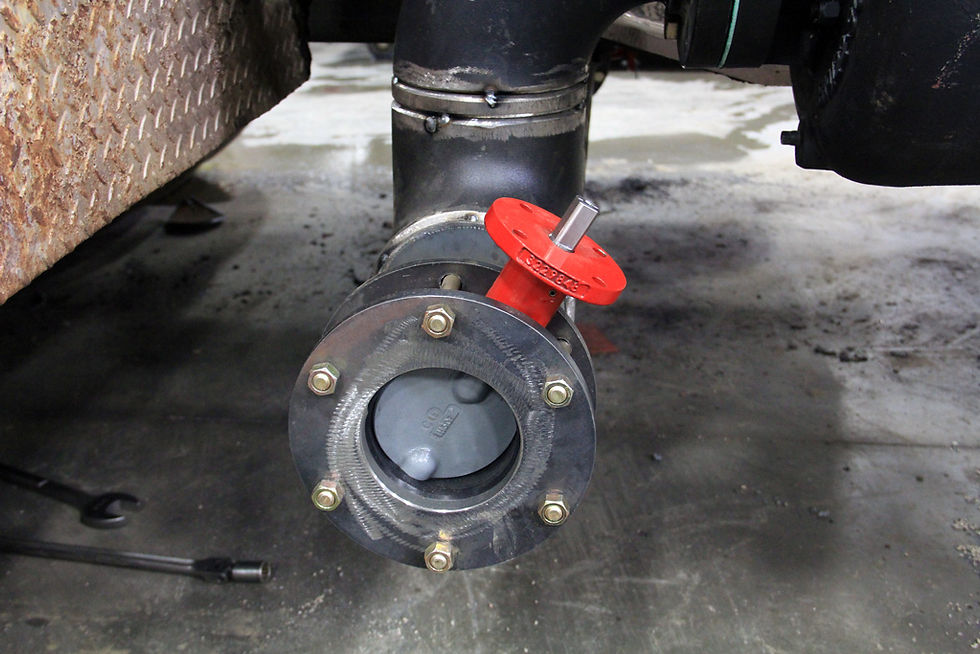Learning Stuff
- Market Coordinator

- Jan 25, 2018
- 3 min read
Updated: Apr 20, 2018
The Summit Sales & Equipment fab shop, as always, was popping on Thursday morning. Here's the latest on Santa Trai, old WFS-398.
Since last time, most of the work has centered around the centrifugal pumps on the sides. Here's a little bit of an overview of one of them.

Maybe it's because they're bright red, maybe because they're most of what I have to talk about this time around, or maybe it's because I'm in the closing stages of a massive reworking of the Summit Sales & Equipment website (including photos of parts, obviously), but I couldn't help but notice the butterfly valves.

Seriously though, these things are everywhere.


Okay, that one's blue.

As long as we're calling out shiny objects, today I learned that the black thing attached to the valve is called an air actuator. Or a pneumatic actuator if you're a nerd. It's pretty much exactly what the name implies - it uses air pressure to open and close the valve. Cool.
There are actually more butterfly valves to come. I assume they're called "butterfly valves" because someone once thought they looked like butterflies in some way. People have very vivid imaginations when it comes to things like that, I've learned. But regardless, here's a look at a loose one, which gives a little bit of a clue as to the mechanics of the thing.

I was a bit concerned that we might be out of stock, given how many are being used, so I stopped by the warehouse to check up on that (okay, it was actually to verify what I had seen, so as to not sound like an idiot here). No worries there though, plenty of the four-inchers left.

They actually get quite huge. Here's a ten-inch one, a beast that weighs like 30 pounds (my estimate after picking one up). And that's not even the biggest size - they can run 12 and 14 inches as well, we just don't have any of those around at the moment.

I'd be remiss if I left this thing without at least mentioning another ubiquitous part, one often found near a butterfly valve: caps for when you don't want stuff to go out or come in.


They're actually two different versions of what are broadly called "hammer unions," because the little nubs are meant to be hit with a sledgehammer. Awesome. I hope to see that happen someday. "Fig," I've discovered, is short for "figure" in this case (I had a heck of a time trying to Google "fig oil," believe me), and the number refers to the various subcategories of hammer unions that all have different purposes, pressure ratings, etc. Some are caps, most are (as you might have guessed from "union") connectors. Naturally, like the butterfly valves, each figure comes in a bunch of different sizes.
We sell those too, by the way. Hit us up if you need a quote.
I promise you didn't miss anything huge while I was out playing "learn stuff all of you have already known for decades." Both drive shafts are now connected, that's the biggest development from above the (centrifugal) pumps.

Closest to the door: A body load double. By the way, speaking of drive shafts, remember when I commented on the oil drops running down the side of those things as being a nice artistic touch? Turns out they're more than that, they're little portholes so you can work on things like the drive shafts without tearing the whole thing apart. Neat.


My thumb is fine, don't worry,





Comments